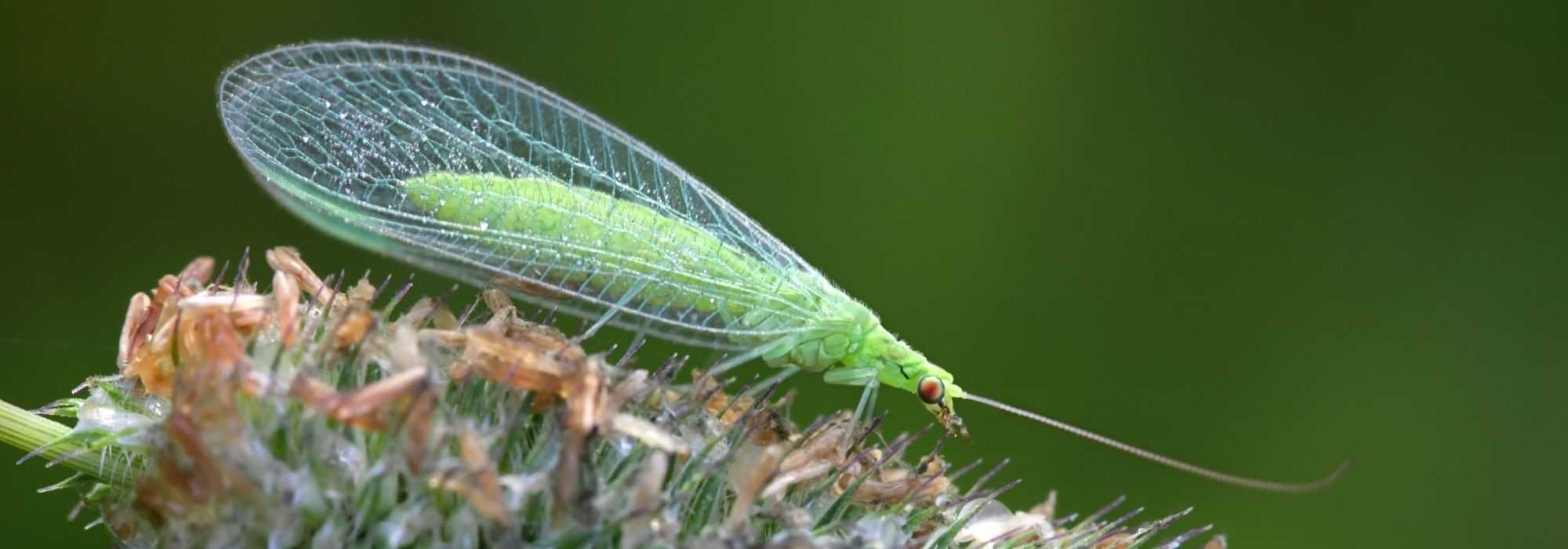
The green lacewing, a beneficial insect in the garden
All you need to know about lacewings
Contents
Also known as the golden-eyed lady, the lacewing is a green insect with graceful translucent wings that resembles a small dragonfly. Its fragile appearance should not overshadow its ability to consume vast numbers of aphids and other plant pests. So much so that its larvae are used as beneficial insects in the garden as part of biological control. Discover this gardener’s ally, the terror of aphid colonies!
What is a lacewing?
A flying insect and a larva
- The green lacewing or Chrysoperla carnea is a light green insect, slender and measuring between 2 and 3 cm in length. With its thin body, lovely golden eyes, large antennae, and long transparent veined wings, it resembles a small dragonfly. This is the appearance it takes when it is adult.
- Before that, it goes through the egg stage, laid in February or March and attached by a fine peduncle to the leaves of a plant.
- Upon hatching, a larva less than 1 cm long appears, yellow-brown in colour, with two reddish stripes on its back and hairs. This little creature, not very appealing and equipped with two powerful mandibles, roams the plants to devour aphids and other plant pests in its path.
- It then transforms into a pupa, enveloped in a white oval cocoon, before becoming an adult with wings, around June.
- On average, it takes 35 days from the egg stage to the adult stage.
- The adult lacewing feeds on pollen, nectar, and aphid honeydew from June to September and thus contributes to the pollination of flowers. It becomes active in the early evening and is very attracted to light at night. From September onwards, it seeks refuge in a hedge or shelter to hibernate.
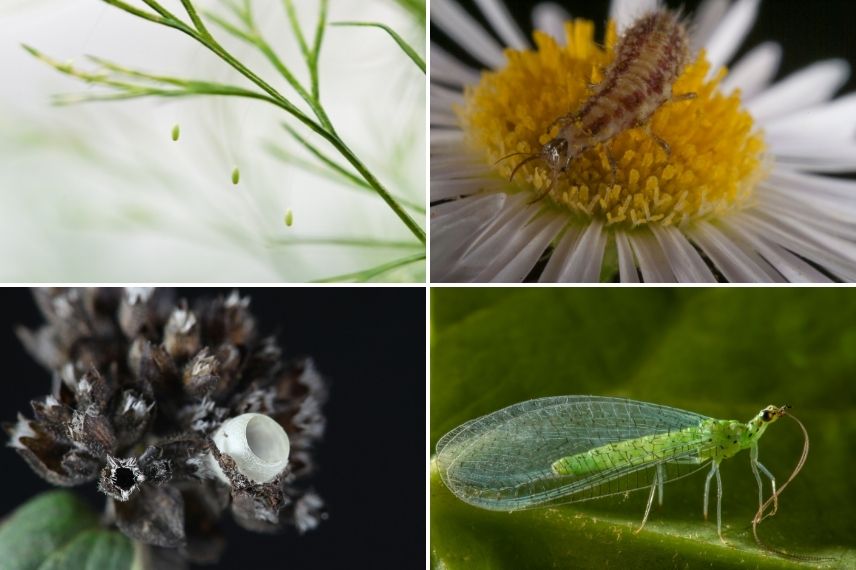
Chrysoperla carnea: eggs, larvae, cocoon, and adult insect
A predator of aphids and scale insects
- Less known than the ladybird, the lacewing is a beneficial insect in the garden that naturally clears the gardener of aphids and other plant pests.
- A natural anti-aphid, the larva devours them as well as their eggs, consuming up to 400 aphids during its larval stage and is therefore very useful against pests.
- It allows for the removal of plant nuisances without resorting to insecticides and by practising biological control against the proliferation of pest insects while preserving nature.
- Good to know: it is used on low plants. If you have tall plants, prefer the use of ladybirds.
- When there are no aphids within reach, the lacewing larva eats scale insects, thrips, mites, or whiteflies.
- You can purchase lacewing larvae and install them as early as March or April near the plants you wish to protect.
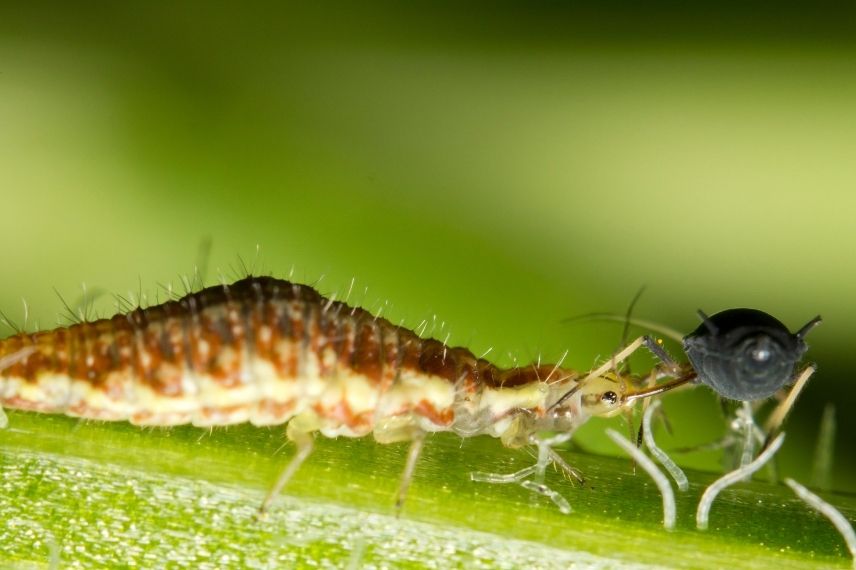
Larva of Chrysoperla carnea attacking an aphid
How to attract lacewings to the garden?
Growing Plants
- To attract lacewings, you must of course provide them with plants that will supply food, namely plants favoured by aphids, as well as nectar-rich plants that adult lacewings feed on.
- For example, you can install nectariferous plants such as nasturtium, fennel, borage, orpine, aster, sunflower, honeysuckle, as well as trees like cherry and apple.
- Select plants to maximise flowering throughout the year so that your garden is in bloom for as long as possible. This will make your garden more welcoming to insects, particularly lacewings.

Foeniculum vulgare, Helianthus annuus (photo Wikipedia) and Borago officinalis
No Insecticide
You must of course avoid using insecticides or any other phytosanitary products lest you drive lacewings away.
Natural Shelters for Protection
- Lacewings appreciate small hedges where they can find shelter. They hibernate under a pile of dead leaves or wood.
- To encourage them to visit your garden, you can plant dogwoods, gorse, cotoneasters, elder, ivy, or other bushes that can provide protection.
Insect Hotels
You can also create insect hotels that will serve as shelters for lacewings and allow them to hibernate.
Here’s how to make a lacewing hotel:
- Take a wooden or cardboard box that can be closed.
- Drill holes of 10 mm at regular intervals.
- Fill the box with straw and tie it with string or raffia to keep it closed.
- Place the box in a sunny spot protected from moisture.
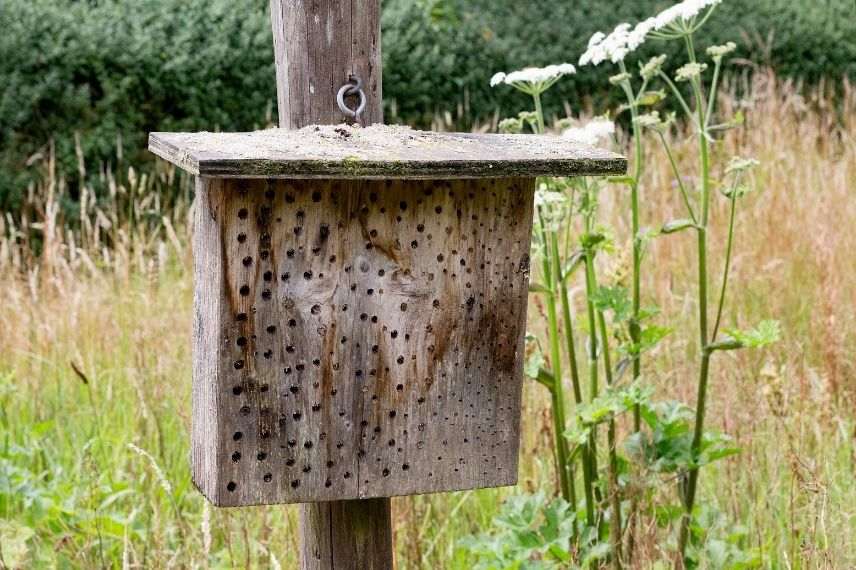
Insect hotel made from a simple wooden box
A Natural and Ecological Garden
- This type of garden promotes not only biodiversity and thus that of insects, but is also a lovely haven of life.
- We let nature take its course and intervene as little as possible.
- No pesticides or insecticides, use of manual tools and natural composts, collection of rainwater, cultivation of melliferous plants, and the creation of hedges and natural refuges such as ponds for animals, in short, a somewhat wild place that encourages life.
- Subscribe!
- Contents
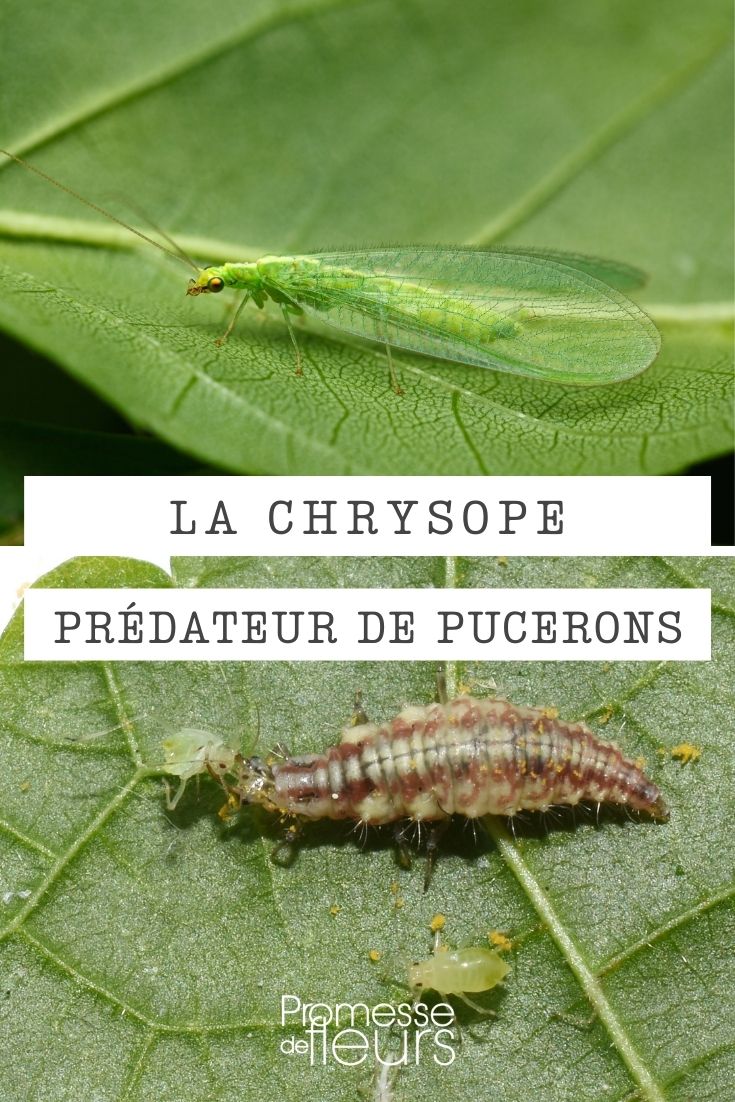































Comments